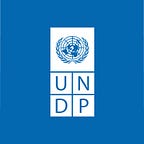3 continents, 3 lakes in danger
There is no shortage of water on the planet. More than two-thirds of the earth’s surface is covered in the stuff. But 97 percent of this is salty ocean water. The remaining freshwater is mostly found in the form of ice, leaving precious little available for human use.
The Sustainable Development Goals acknowledge water as a key issue in the fight to end poverty. Goal 6 calls for universal access to safe water by 2030. Part of this includes a focus on preserving our freshwater resources.
Key to achieving this target is protecting freshwater lakes around that world that are under threat from human activity. Today, we take a look at three lakes in danger and how to save them.
Lake Tanganyika — Africa
Lake Tanganyika is one of the world’s natural wonders. Holding about 17 percent of the globe’s freshwater, it is also the oldest and the deepest lake in Africa. Bordering four countries (Burundi, Democratic Republic of Congo, Tanzania and Zambia), it offers a source of livelihood for over 10 million people.
It is also a biodiversity hotspot, sheltering over 700 species of fish that are found nowhere else in the world. The region includes forest areas that are among the few remaining habitats for chimpanzees and gorillas.
But the lake basin is increasingly vulnerable to the effects of human activities, such as deforestation, unsustainable agricultural and fishing practices, mining activities and pollution. These threats are intensified by the impacts of climate change and the rapidly growing population in the region.
UNDP, with GEF funding, has been supporting the four governments’ capacity to jointly manage and sustain the resources of Lake Tanganyika and its basin since the early 1990s.
Lake Inle — Asia
The buzzing that distracts bird watching tourists on the tranquil waters of Myanmar’s Inle Lake, is not the sound of the rare Sarus cranes in their nests.
The cranes buzzing are mechanical ones, floating on barges. They’re part of a plan to save Myanmar’s iconic Inle Lake. The 1.5 million-year-old freshwater lake is a biosphere reserve, home to the last of rare endemic species of birds, fish and biodiversity found nowhere else on earth except on Inle Lake. And it’s on the brink of environmental disaster.
Decades of unsustainable environmental practices have caused the lake to shrink and its water to become polluted. Scientists call this anthropogenic environmental climate change, a term for environmental degradation caused by human activity.
Inle lake has shrunk 38 percent in 73 years, and only 38 percent of the lake remains open for general use. Since 2012, UNDP has been working on the Inle Lake Conservation Project, together with 71 villages in the lake region, UNESCO and Myanmar’s Ministry of Environmental Conservation and Forestry. With funding from Norway and Finland, the project aims to restore this ancient fresh water lake and prevent further shrinkage.
Lake Prespa — Europe
At over 5 million years old, Lake Prespa in the former Yugoslav Republic of Macedonia is one of the most ancient freshwater lakes in the world. It’s beautiful but environmentally fragile basin area is home to more than 2,000 species of fish, birds, mammals and plants. Many of these species are unique to the area, and many are in danger of dying out if their habitat isn’t protected.
This singular eco-system has suffered greatly over the last 40 years — above all from pollution caused by unsustainable farming practices. Many thousands of tonnes of rotten apples have been dumped along the shores, and excessive use of pesticides and fertilizers has been common practice in the area. Along with erosion and the introduction of untreated waste and wastewaters, this has caused severe deterioration in the health of the lake.
The Restoration of Lake Prespa project is developed and implemented by UNDP in partnership with the Municipality of Resen and the Ministry of Environment. The project is funded by the Swiss Development Cooperation and includes a comprehensive set of measures to bring the eco-system back to health while protecting the livelihoods of local farmers.
